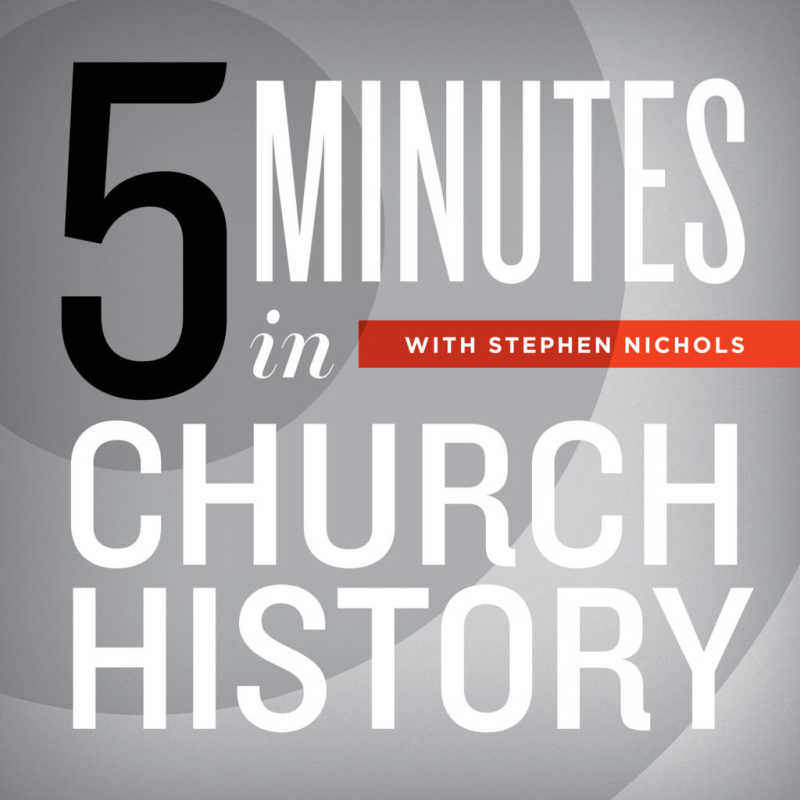David Brainerd's Hebrew Dictionary

Transcript
I think on a previous episode I might have confessed to you that historians are strange people, and they like to visit strange places. And I think I mentioned to you that I like to visit cemeteries. Well in addition to cemeteries, historians also like to visit libraries. I know, sounds really exciting doesn't it? But, this library and this find is exciting.
This is the library at Princeton University, and there at Princeton University among the many interesting books is one book in particular that I'd like to talk to you about. Well, for you to get a sense of it, it's about 4"x 6"x 4," so about 4 inches wide, about 6 inches in length, and about 4 inches thick. But what's fascinating about this book is the binding. It is actually bound in otter skin. That's right, otter skin. And not only is it bound in otter skin, but it's painted with blue and red stripes; and its painted in a style that's the characteristic painting of the eastern woodland Indians. So we have an otter-skin bound, painted, Hebrew dictionary.
It is a dictionary of Hebrew and also of Aramaic. It was first published in Bazel in 1654, and somehow it made it's way into the hands of David Brainerd. When David Brainerd died it passed on to Jonathan Edwards. So it was actually in possession of Jonathan Edwards. And of course at the end of his life, Jonathan Edwards was at Princeton and somehow that Hebrew dictionary made its way through the Edwards family, and some Edwards family member gave it to Princeton University.
This is fascinating to me for a lot of reasons. First, it's the binding and the painted stripes on it—it looks really cool. If you ever get a chance I hope you get to see it. But also, this is a Hebrew dictionary, so this is for all you Hebrew teachers out there that your labors are not in vain. This belonged to David Brainerd. David Brainerd was a missionary to the Indians in the 1700's. He started first in New York and he was a missionary there. Then he went down to New Jersey and into Pennsylvania and was a missionary to the Delaware's. He even went deep into the woods of central Pennsylvania and was a missionary to the Susquehannahs.
Brainerd started off his life as a farmer. When he was 18 years old he inherited a farm, and he farmed it for about 3 years. And then when he was 21 he had a conversion, and at his conversion he says that he was given a "hearty desire to exult God and seek first His Kingdom." Well, about two months after his conversion he went to Yale. And as he entered Yale this was at the time of the Great Awakening, so this is right around 1740, 1741-42. And in 1742, Brainerd was certainly part of the revival fervor. And he was concerned for the state of the soul of some of his professors. In fact at one point, David Brainerd, a student at Yale said of one of his professors, this professor has "No more grace than a chair." Well, for that David Brainerd found himself expelled from Yale University, and that's when he began his work among the Native Americans in 1743.
By 1746, after just a few short years of missionary work, Brainerd was so ill that he simply could not continue. We know now that he had Tuberculosis. In fact he had it back from his first year at Yale. So he made his way North, ended up at Northampton in Massachusetts and was in the home of Jonathan Edwards. And while he was there, Jonathan Edwards took his diary and expanded upon it and wrote a biography, "The Life of David Brainerd." And it was there in Edwards' home, in 1747 that at the age of 29, David Brainerd died.
His epitaph, which most likely was written by Edwards, simply records, "A faithful and laborious missionary to the Stockbridge, Delaware, and Susquehannah Indians." And not only was he a faithful missionary, he was also a faithful student. And so he had in his possession his Hebrew dictionary with its otter skin binding, and it's blue and red painted stripes.
So, David Brainerd's Hebrew Dictionary.
